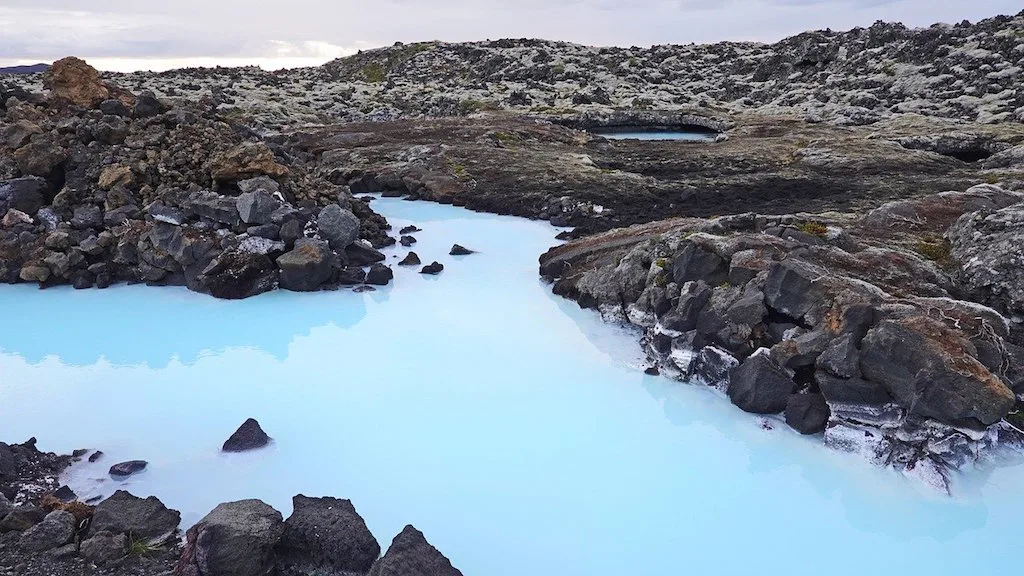Every year, with the exception of this past year (due to COVID-19 travel restrictions), millions of people flocked to the Blue Lagoon in Iceland. Now as travel restrictions begin to ease, the joy of traveling to exotic and new places has been reinstated in the lives of many people. It is safe to assume that most people have heard about or seen pictures of the gorgeous Blue Lagoon in Iceland. If you are unfamiliar with the Blue Lagoon and want to know everything there is to know, then you have come to the right place. This article will dig deep to learn the new name of the Blue Lagoon, why it’s popular, where to stay, and more. So, pick a comfy spot and keep on reading!

1. What is the Blue Lagoon?
Undoubtedly, this is probably the first question that comes to mind. The Blue Lagoon is a geothermal pool that is situated in a large lava field in Iceland. A geothermal pool is a fancy way of saying “hot lake”.
2. What is the real name of the Blue Lagoon?
What better way to attract tourists to a geothermal pool than with a catchy and picture-provoking name?! The real name of this lagoon is “Blaua Lounid”. That’s right, Blue Lagoon isn’t the real name of this hot lake. As you can tell, the real name does not roll off the tongue as smooth as Blue Lagoon. It was definitely smart thinking on behalf of the Iceland people to think of cool name like Blue Lagoon.
3. Is the Blue Lagoon in Reykjavik?
Contrary to what most people think, the Blue Lagoon is not in the city of Reykjavik. A 45-minute ride from the city center of Reykjavik will take you to the Blue Lagoon. The Blue Lagoon is actually located south-west of Reykjavik, in the Reykjanes Peninsula.
4. Facts and History of the Blue Lagoon
The Blue Lagoon is run from the Svartsengi Power Plant, which was built in 1971. Drilling into the lava fields near the power plant led to the discovery of the geothermal water, which is now the Blue Lagoon. After years of perfecting the drilling process and the ecosystem of the “pool”, the first bathing facilities opened in 1987. Thanks to the power plant and the healing water of the lagoon, many people flock to this area every year to soak.
5. How to get there from Reykjavik?
As I previously mentioned, the Blue Lagoon is quite a long way from Reykjavik, and walking there is definitely out of the question. Most people choose to rent a car, book a bus, taxi, or shuttle to get to the Blue Lagoon. Getting to the lagoon from the city of Reykjavik is easy!
Shuttle or Bus
Two of the popular modes of transportation to the lagoon are a shuttle or a bus. Most shuttle services run from the Keflavik Airport as well as from downtown Reykjavik. Check out this site for a fast and easy shuttle service to the Blue Lagoon of Iceland.
Rent a car
Renting a car is one of the fastest and easiest ways to get to the lagoon. The main highways to take from Reykjavik are west on Highway 41 and then straight onto Highway 43. Within 45-50 minutes you will arrive at the beautiful lava fields of the secret lagoon Iceland.
Use a Taxi
If you prefer to hire a private transfer to the lagoon then you should hire a taxi service. I will give you a fair warning that taxi fares in Iceland can get quite expensive, with a roundtrip ride costing over $50 per person. Hreyfill is a trusted taxi service in Iceland and you can book your taxi online, over the phone, or with their app.
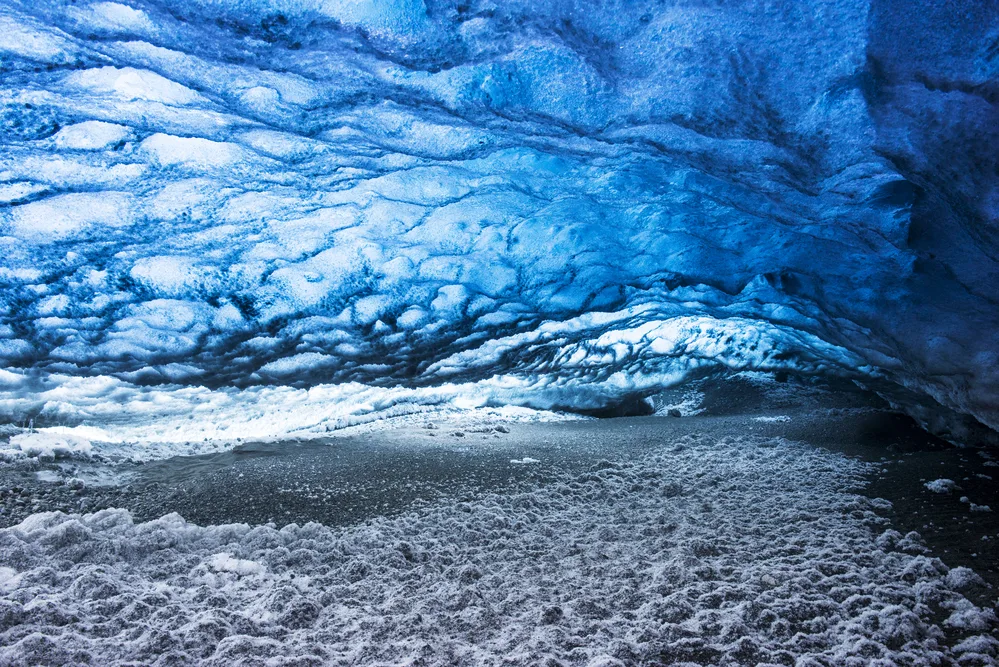
6. When is the Best Time to Go to the Blue Lagoon?
Although the Blue Lagoon is open year-round, there are better times to visit than others. In my opinion, the best time to go to the Blue Lagoon is in the spring or early summer. I would also recommend visiting the lagoon during the early evening so you can avoid the busy crowds and have priority access. Before you visit the lagoon, check out their website to ensure the opening and closing hours and what days they are open.
7. How much does a trip to the Blue Lagoon in Iceland Cost?
I am not going to lie to you, the admission and extra costs at the Blue Lagoon are quite expensive. One way to save money on admission tickets is if you have a child who is 13 years old or younger (admission is free). According to the Blue Lagoon website, prices can vary depending on the day and package you choose. For example, I did a quick search for one adult admission ticket and the results ranged from comfort level at $68, premium level at $83, and retreat spa at $600.
8. Iceland Blue Lagoon Pricing
The pricing levels at the Blue Lagoon are quite steep and each level offers different services. The comfort level is the cheapest package and it offers entrance to the lagoon, a mud mask, towel, and 1 drink of your choice. The premium package includes everything listed in the comfort package and also includes a second mask of your choice, bathroom, reservation at the Lava restaurant, and one glass of wine (when dining at the restaurant). The most expensive package is the retreat spa and this package includes a private changing room., access to the lagoon, spa, retreat lagoon, blue lagoon ritual, and Blue Lagoon skincare amenities.
9. How do you buy a ticket to the Blue Lagoon?
You can book a ticket to the Blue Lagoon via the Blue Lagoon website or look at other sites such as Viator.
10. How long do you need to spend at the Blue Lagoon?
If you planning to visit other places in Iceland, you might be wondering how long your visit to the Blue Lagoon should last. On average, guests tend to spend 3-4 hours at the lagoon. This does not mean that those guests are in the water the entire time. The hours spent at the lagoon include: soaking in the water, spending time with friends or new acquaintances, drying off, and eating at the Lava restaurant.
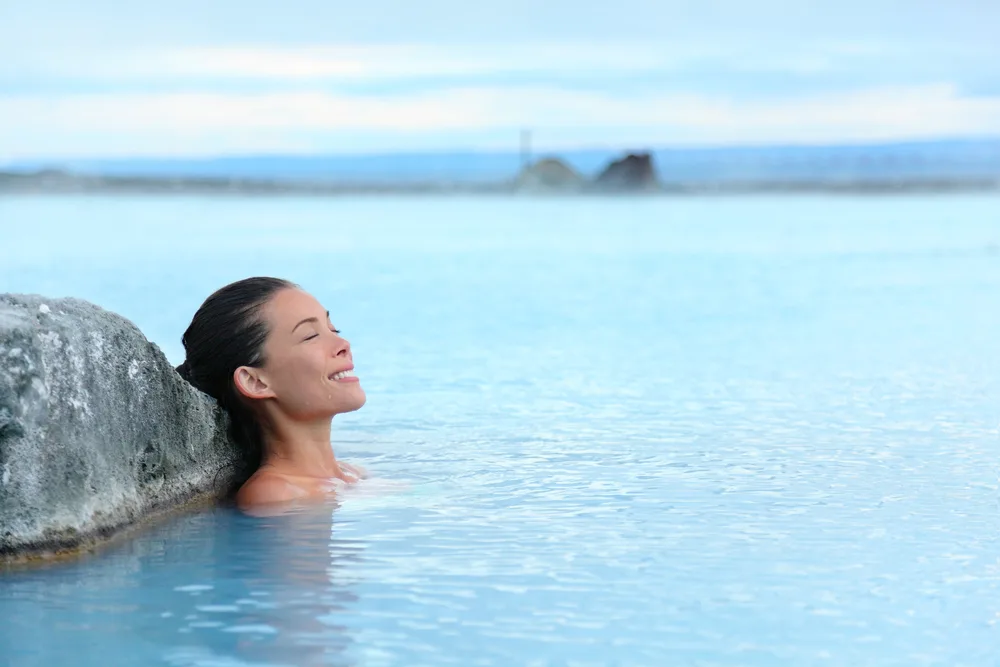
11. Is the Blue Lagoon a Natural Spring?
One of the key things to remember about the Blue Lagoon is that it is NOT a Natural Spring. Often people believe that this is a natural hot spring, similar to those found in Mexico and the Philippines. This lagoon is man-made and was created in 1976. The geothermal power plant, Svartsegni, is located near the lagoon and it is the power source for the water supplied to the lagoon.
12. Why is it so blue?
Upon arriving at the blue lagoon, you will instantly notice the bright blue color of the water. As you previously read, the lagoon is man-made so the color of the water has no flowing rivers or streams that contribute to the blue water. In reality, the blueness of the water comes from silicon dioxide, aka silica element. This is a natural element that makes up parts of the Earth’s crust. So, although this lagoon was not naturally created, the elements in the water are pure.
13. Why is the Blue Lagoon so popular?
If you are doing a quick search online for the best lagoons or springs, the Blue Lagoon will be close to the top of the list. This lagoon has always been a favorite spot to visit in Iceland but it gained more exposure after National Geographic named it one of the Wonders of the World. This lagoon is popular because it offers guests a one-of-a-kind experience, a relaxing soak and it is great for the skin.
14. Do you Shower Before Going into the Blue Lagoon?
If you have ever been to a natural spring, the rule before entering the water is that you need to shower or wash your body before entering. While other natural springs around the world allow you to shower with a bathing suit, the Blue Lagoon makes you shower naked. Although some of the shower stalls are publicly open, there are some stalls that are closed for privacy needs. So, whether you choose to shower publicly or privately, make sure you rinse your body and condition your hair before entering the lagoon.
15. What is the Blue Lagoon Temperatures?
The water temperature of the Blue Lagoon sits around 100 degrees Fahrenheit or 38 degrees Celsius. Thanks to this warm temperature, guests are constantly in a state of bliss as they soak up in the lagoon. The water of the lagoon comes from the underground part of the lagoon and the temperature below reaches a whopping 460 degrees Fahrenheit! To be honest, I am glad that the water cools down to a normal level before taking a dip. An interesting thing I learned about the lagoon’s temperature is that it is not affected by the weather. So, whether it rains, snows, or shines, the temperature will remain the same.
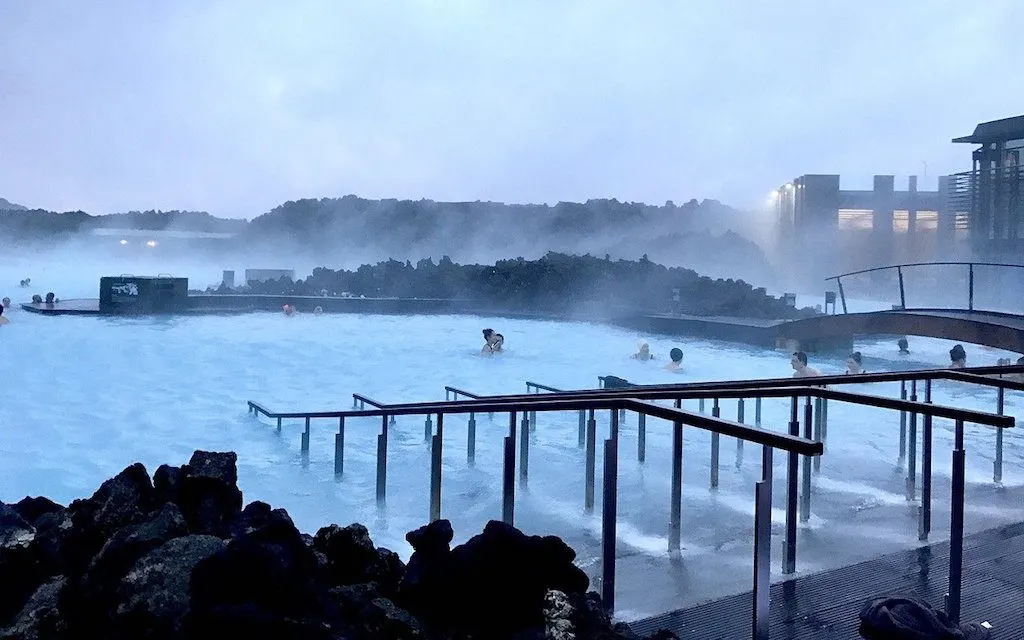
16. How Deep is the Blue Lagoon?
The deepest part of the Blue Lagoon reaches almost 5 feet and 3 inches. Some people prefer to stick to the shallow end so they can soak up the water at a comfortable level without having to constantly move around or paddle.
17. How Big is the Blue Lagoon?
Now that we have covered of deep the lagoon is, you are probably wondering how big it is. Well, the entire area of the lagoon covers a surface area large enough to host the lagoon, spa, hotel, and restaurant, which is 808 square meters. The lagoon itself holds over 7 million liters of geothermal seawater and is automatically refilled every 48 hours.
18. Where does the water come from?
The next obvious question on your mind is probably, where does all the water come from? Believe it or not, the water from the lagoon comes from the inner depths of the Earth. After years of evacuations, drainage and high-tech plumbing the water regenerates into the lagoon. The seawater and groundwater meet at over 6 ½ feet below the Earth’s surface and create the geothermal seawater that is used in the lagoon.
19. Does the blue lagoon smell?
So, if the water comes from the depth of the Earth’s surface, is it going to smell bad? That was one of the first questions I wanted to know and the answer is sometimes. There are times when you will not notice any kind of smell in the lagoon and other times you might smell the tiniest bit of Sulphur (but not as much as other places in Iceland). For the most part, you are not going to notice any bad smells because there are numerous minerals in the water. Plus, everyone needs to shower before entering the lagoon so there shouldn’t be any weird smells coming from people.
20. Is the Blue Lagoon clean or toxic?
Unlike regular pools, chlorine is not needed to disinfect the lagoon. The lagoon has a self-cleaning ecosystem that identifies foreign bacteria so there is no risk for infections transmitted to guests. According to the Blue Lagoon website, they have been awarded the Blue Flag every year for the past 10 years thanks to the ecosystem, responsible guests, and the quality of water at the lagoon.
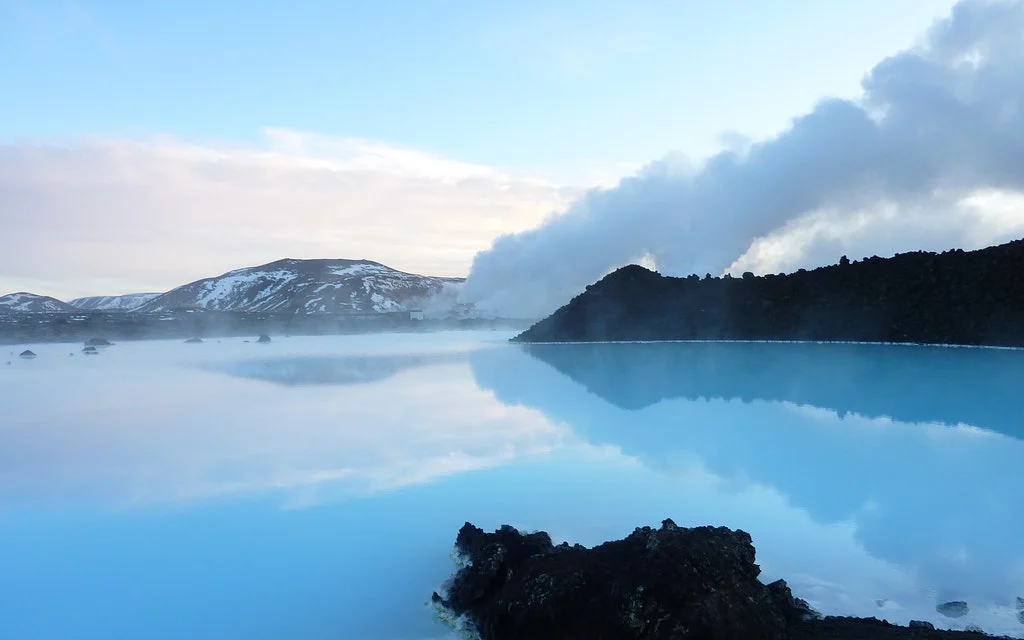
21. Is there Bacteria in the Blue Lagoon?
Thanks to the above-mentioned self-cleaning ecosystem, there is no bacteria that live in the lagoon’s water. The high-intensity cleaning system does not allow for bacteria to thrive in the water of the lagoon, so it instantly killed.
22. Does the water DESTROY your hair?
There isn’t a simple answer to this question, so I’m going to say: Yes and No. The water of the lagoon is said to work “miracles” on the skin for things such as acne, aging skin, and eczema but it is not said to work wonders on the hair. The effects of the lagoon water can differ from hair types. For example, people with thin and straight hair have suggested their hair becomes thicker after a dip in the lagoon. On the contrary, people with curly and dry hair tend to have frizzy and the crazy Madonna loud and big 80’s style hair. I recommend washing your hair and then using a leave-in conditioner and a swim cap just to avoid any possible damage to the hair.
23. What is so special about the Blue Lagoon in Iceland?
The Blue Lagoon is special for many reasons which include: the stunning blue water surrounded by lush mountains, the health benefits of the water, and the hot temperature. How many lagoons have you visited that have “magical” health benefits associated with a relaxing soak? Other than spas, no lagoon can exfoliate, clean, and nourish your skin like the Blue Lagoon. Let’s face it, if you can alleviate the symptoms or cure certain skin diseases just by soaking in the lagoon’s water, wouldn’t you do that? As an added bonus, the Blue Lagoon hosts the annual weeklong music festival, Iceland Airwaves. The next music festival will be held in the first week of November 2021. With the health benefits, relaxing atmosphere and awesome music festival, Blue Lagoon is definitely a special place to visit.
24. Is the Blue Lagoon too touristy?
I am not going to lie; over the years the Blue Lagoon has become quite touristy. Thanks to social media and Instagrammers, pictures and vlogs of the Blue Lagoon have been popping out everywhere. For those who are looking for an authentic trip and visit local places to Iceland, I would not recommend visiting the Blue Lagoon. I say this because locals do not visit the Blue Lagoon and you will instantly notice its more of a tourist trap. With that being said, sometimes tourist traps are a great way to experience a new adventure that you would never have thought to embark on. Even though there are still plenty of tourist traps like the Hollywood sign in LA and the Welcome to Las Vegas sign in Nevada, people visit them regardless of what others think. In my opinion, even if the Blue Lagoon is too touristy, who cares? If you want to visit then you should and don’t let other’s opinions get in the way of doing what you want!
25. Is the Blue Lagoon in Iceland Overcrowded?
This is a somewhat difficult question to answer because of the COVID-19 restrictions. Before this crazy pandemic hit the world by storm, the Blue Lagoon was always overcrowded during the peak season. Like many tourist attractions, the peak season (often in the summer) always saw a high volume of visitors thus resulting in overcrowding. As of right now, the Blue Lagoon has officially reopened with daily hours from 9 am – 8 pm from July to December.
Similar to most tourist attractions, you must either be fully vaccinated or take a PCR test before arriving at the Blue Lagoon. I recommend heading the Blue Lagoon website for further information on guidelines for entering Iceland and the lagoon. Due to these restrictions, I highly doubt that the Blue Lagoon will be filled to capacity or become overcrowded.
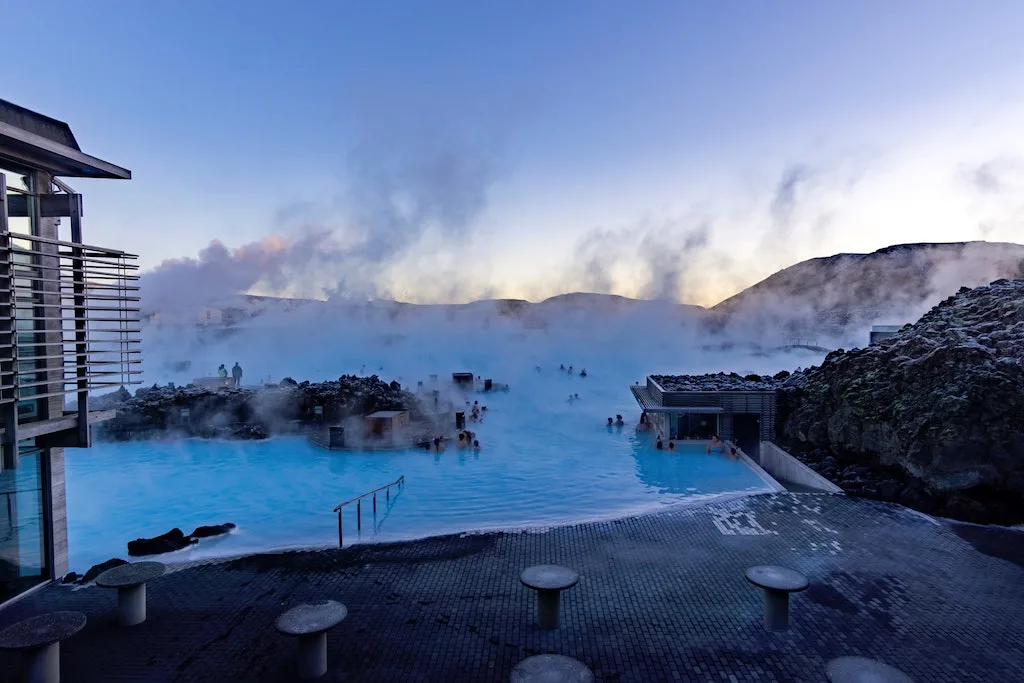
26. How many visitors go to the Blue Lagoon?
Before the pandemic, the Blue Lagoon saw at least 1 million visitors per year. To guarantee entrance to the Blue Lagoon people would book their tickets months in advance. Before the pandemic, at least 4,000 people would visit the Blue Lagoon daily. As I previously mentioned, due to COVD-19 restrictions there will be fewer daily visitors at the lagoon. But the bright side is that you will have more leisure time at the lagoon without the large crowds interrupting your soaking time.
27. Can Children go to the Blue Lagoon?
The simple answer to this question is YES. Children over the age of 2 are allowed to visit the Blue Lagoon. There must be one adult present for every two children, which helps ensure the safety of the children. Unfortunately, children under the age of 2 cannot visit because their bodies are too sensitive to the minerals and hot temperature of the water. Children that are ages 2-13 have free admission to the lagoon as long as they are accompanied by an adult or guardian. It is necessary that children from ages 2-8 wear floaties. It should go without saying that parents and/or guardians should always have complete supervision of their children and make sure they respect the rules of the lagoon.
28. What should we bring with us?
Now that you are thinking about booking a trip to the Blue Lagoon in Iceland, let me share some tips on what you should bring. The entrance fee of the lagoon includes a towel, standard soap, shampoo, and conditioner but you can always bring your own supply.
Swimsuit
Swim cap
Leave-in conditioner
Clothes
Waterproof case (for your camera or smartphone)
Sunscreen
Sandals or flip flops
Glasses (I do not recommend bringing or wearing your contact lens because the water might irritate your eyes or the lens)
29. Is there a specific etiquette to follow?
It might seem like a no-brainer that you must follow all the rules when visiting new places or attractions. There are not many rules of etiquette at the Blue Lagoon and they simple to follow.
Shower naked before entering the lagoon
Respect yourself and others
Must be prepared to leave 30 minutes before closing time
Adhere to the current restrictions and requirements before and upon entering the lagoon
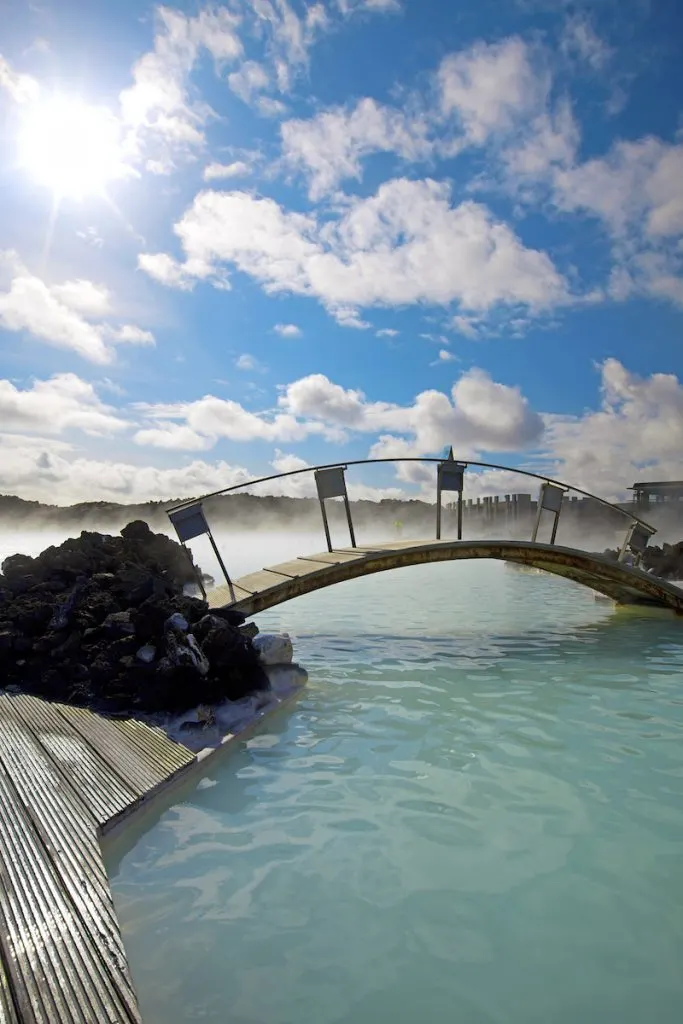
The Blue Lagoon on a sunny day in Iceland
30. Does the Blue Lagoon have a Secret Sister?
Most people do not know that the Blue Lagoon has a secret sister! The lagoon’s secret sister is not better than the Blue Lagoon but it is just a different place to visit. The secret sister is called the Secret Lagoon and is a 90-minute drive from Reykjavik. Unlike the crowded and busy Blue Lagoon, the Secret Lagoon is a quiet oasis. This secret sister is considered one of the oldest thermal baths in Iceland and dates back to 1891. You can purchase tickets here for a Secret Lagoon ticket as well as transfers to and from Reykjavik.
Similar to the Blue Lagoon, the secret sister has water temperatures of 100 degrees Fahrenheit. The secret sister is located in the quaint village of Fludir and is surrounded by hot springs, steam, and mystical energy. Once you are in Iceland, it is definitely worth a trip to visit this lovely secret sister lagoon.
31. Should you combine a Blue Lagoon visit with another tour in Iceland?
Depending on the length of your stay, your budget, and your traveling companions, you might want to opt for combining a Blue Lagoon visit with another tour. I would recommend booking the Blue Lagoon tour along with the Golden Circle and the Kerid Volcanic Crater. This tour is available on Viator and prices start from $129. A great thing about booking this tour on Viator is that you can reserve your tour now and pay later and there is free cancellation up to 24 hours before the tour.
This specific tour includes an 11-hour tour (which begins at 8 am) of the above-mentioned places. You will also learn about Iceland’s volcanic landscapes, visit the Gullfoss Waterfall and walk along with the tectonic plates in Thingvellir National Park. This tour includes a professional guide, hotel pick-ups, and drop-offs, and free Wi-Fi on the bus. It does not include food, drinks, gratuities, or entrance fees to the Blue Lagoon.
32. Can you take the treasures of the Blue Lagoon in Iceland home with you?
If there are any treasures that you must take home with you from the Blue Lagoon, they are cosmetics. Thanks to the wonderful “healing” powers of the water and minerals, the cosmetics are amazing. I recommend buying mineral masks, creams, and scrubs. All of these products will leave your skin feeling radiant, soft, and smooth. Once you fall in the love with skincare products from the lagoon, you will want to exclusively use them. If you cannot physically go to Iceland, then you can order the cosmetics of the lagoon online at the Blue Lagoon website.
33. Visit the Blue Lagoon at Night
During the peak months, the Blue Lagoon is open until 8 pm. As of right now, there has been no specification on the Blue Lagoon website that they will be open later than 8 pm. Prior to the COV-19 restrictions, guests were allowed into the lagoon until11 pm and this offered a stunning view of the lagoon and Iceland sky at night. Check the Blue Lagoon website for additional announcements on nighttime viewing at the Blue Lagoon.
34. Dining at the Blue Lagoon
There are 3 dining experiences at the Blue Lagoon:
Lava Restaurant
This stunning restaurant was carved into the west side of the Blue Lagoon and inside an 800-year-old cliff! The Lava Restaurant offers guests an a la carte lunch and dinner menus with options from Baked golden and ruby beets, Langoustine soup, grilled beef tenderloin, and a scrumptious coconut mousse for dessert. There is also a children’s menu which offers: hamburger and fries, chicken and fries and fish and potatoes.
Moss Restaurant
The Moss Restaurant has been praised for its 2020 Michelin Guide (thanks to Chef Aggi) and offers breathtaking views of the volcanic horizon. This restaurant has set menus that offer a 5 or 7-course meal. Due to the limited capacity and freshly prepared ingredients, you must reserve a table in advance.
Spa Restaurant
The Spa Restaurant complements the relaxing atmosphere of the lagoon. Guests can choose to dine in their robes and no reservations are required. Delicious meals at this restaurant include smoked salmon, avocado toast, Sunday roast, and chicken salad.
35. Blue Lagoon Experience
As you have previously read, the Blue Lagoon experience is truly one-of-a-kind. It is one of the few places in the world that offers a tranquil soak in warm water and helps rejuvenate the skin. Thanks to the semi-cool temperatures of Iceland, it is a nice treat to soak up the steamy waters at this lagoon. The experience at the lagoon may include spa treatments, a massage, drinks at the swim-up bar, and a great time with friends and family.
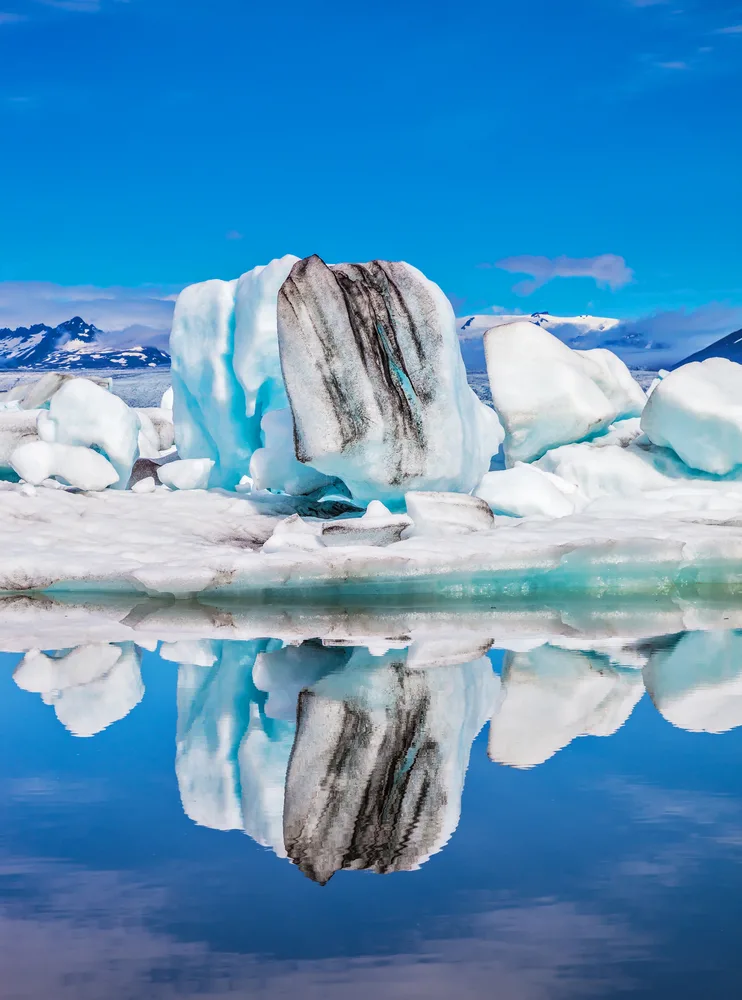
36. Blue Lagoon Spas
There is no doubt that the water at the Blue Lagoon has healing powers all on its own. For those of you who want to be pampered to max then you must visit the Blue Lagoon Spas. The treatments and amenities at the spa include 30 or 60-minute massage, a 120-signature massage, a steam cave, a cold well, algae, and silica treatments. One thing that surprises guests at the Blue Lagoon Spas is the spa within a spa, which is the Lava Cove. This ultra-private suite is an intimate place that reserves a luxurious sanctuary. It comes complete with a private mineral-enhanced lagoon, butler, wood-burning fireplace, kitchen, dining area, guided yoga sessions, and an in-water massage.
37. Blue Lagoon Iceland Address
The address of the Blue Lagoon in Iceland is:
Norðurljósavegur 9
240 Grindavík
Iceland
38. Where to Stay in Iceland?
Luxury: 41 A Townhouse Hotel
If you looking to stay at a luxurious hotel in Reykjavik, then you must stay at 41 A Townhouse Hotel. This hotel offers: free Wi-Fi, a 24/7 front desk, kitchen, premium bedding, free toiletries, daily housekeeping, luggage storage, and it is located in the historical city center.
The Retreat at Blue Lagoon
The Retreat at the Blue Lagoon offers guests an enhancement to their Blue Lagoon experience. This luxury hotel offers concierge service, daily housekeeping, fitness center, spa center, breakfast services in your room, free Wi-Fi, wheelchair accessible rooms, shuttle service, and a gift shop.
Mid-range: Hotel Odinsve
Hotel Odinsve is located in the center of Reykjavik and the main shopping street of the city. Guests can enjoy family rooms, laundry services, non-smoking rooms, free Wi-Fi, allergy-free rooms, concierge service, and a snack bar.
Budget: Igdlo Guesthouse
Guests of the budget-friendly Igdlo Guesthouse are in for a treat with the airy rooms and wood furnishings at this guesthouse. Amenities available include free parking, free Wi-Fi, laundry service, family rooms, a picnic area, and a garden.
Hostel: KEX Hostel
Roughly 800 feet from the Laugavegur shopping street is the KEX Hostel. This hostel offers guests free Wi-Fi, facilities for disabled guests, a 24-hour front desk, restaurant and bar on-site, a tour desk, concierge service, and a mini-market on site.
39. Is the Blue Lagoon worth the money?
This question is a little complicated to answer because everyone has a different experience, budget, and expectation. In my opinion, the admission prices are a little on the expensive side but the Blue Lagoon experience is priceless. Regardless of how many people have visited this lagoon or posted pictures/videos online, I would still want to pay money to soak up the healing waters of the Blue Lagoon in Iceland.
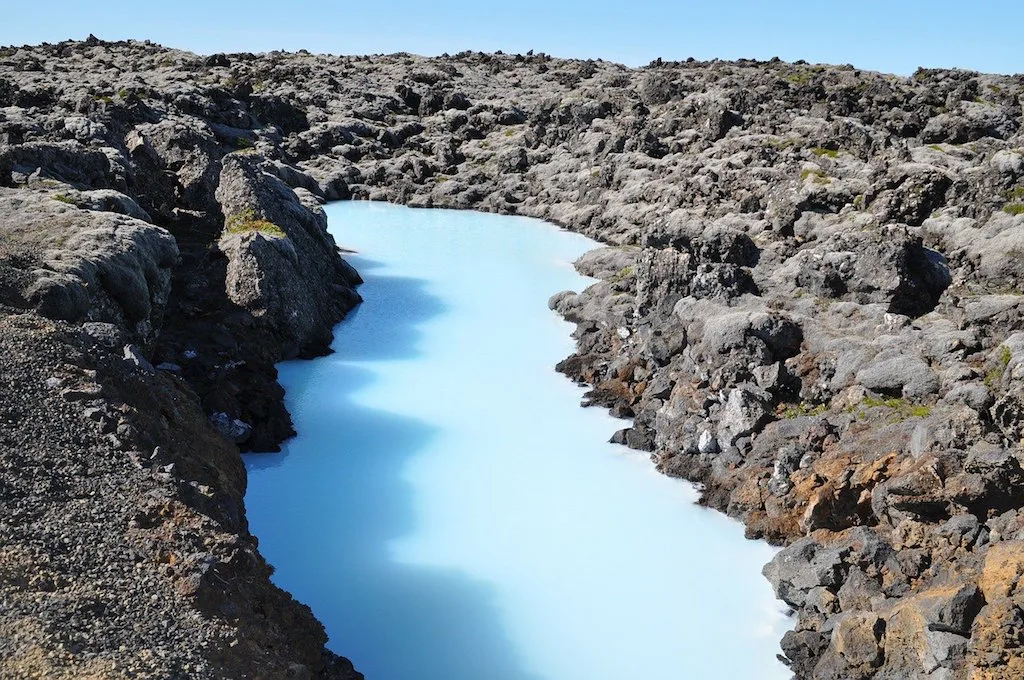
40. What would you do instead of going to the Blue Lagoon in Iceland?
For people who would rather visit other attractions in Iceland, then you must certainly check out these places or engage in these activities:
Reykjavik Food Walk
For all you food lovers out there, is there anything better than savoring new dishes from different countries? The Reykjavik Food Walk is a 3-hour tour of various restaurants and food trucks in the city. Along the tour, you will visit the Harpa Concert Hall, Parliament House all while chowing down on Icelandic hot dogs and Icelandic ice cream.
Go Snorkeling at “The Rift”
A snorkeling adventure to Silfra at the Thingvellir National Park is a great experience. By booking a tour similar to this one, you will have access to an instructor, use of snorkeling gear, a dry suit, and a swim between the tectonic plates.
Go Hiking
The online website, Viator, offers great tours around Iceland. One of the most intriguing hiking experiences would be a day hike to the active Fagradalsfjall Volcano. Check out more information here.
